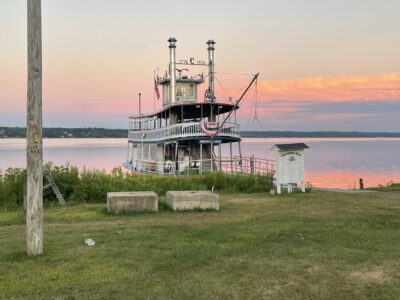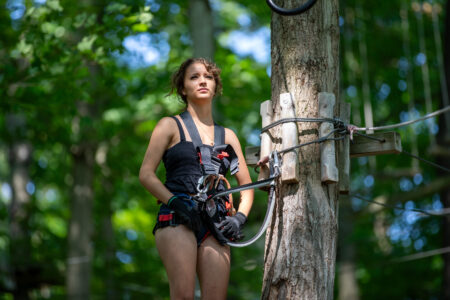State Gives Advice On Handling Spotted Lanternfly
State officials are still working to slow the spread of the spotted lanternfly[.
Experts from New York state and Cornell University came together last week for a virtual meeting for media outlets across the state to give an update on the invasive species and to provide tips for how residents can manage the pest if they find it.
Speakers at the meeting were Christopher Logue, director of the New York State Department of Agriculture and Markets Division of Plant Industry, and Brian Eshenaur, associate director and Invasive Species IPM Coordinator, Integrated Pest Management at Cornell University College of Agriculture and Life Sciences. Together they discussed the state’s efforts to combat the invasive species that can negatively impact New York agriculture and provided tips for residents on how to manage the invasive pest on their property.
The spotted lanternfly is a destructive pest that feeds on more than 70 plant species, including plants and crops that are critical to New York’s agricultural economy, such as grapes. First found in New York State on Staten Island in August 2020, spotted lanternfly has been observed in all New York City boroughs and on Long Island, and in several locations across the State, including in Ithaca, Binghamton, Albany, Syracuse, the Finger Lakes region, and Buffalo. The Department is working closely with partners on the state and federal levels on measures to combat the population, control its spread to other areas of New York State, and protect New York’s agricultural crops.
As adult spotted lanternflies emerge this summer, New York State has been hearing concerns from New York residents regarding how to control them, leading to state officials and Cornell experts holding Thursday’s meeting where they did not only share tips with residents on how to combat spotted lanternfly on their properties, but also information on the it’s life cycle and what to expect for the rest of this summer and through the fall and winter seasons.
“Primarily one of the things we’re looking at with spotted lanternfly at this moment is trying to slow the spread within the state of New York as well as other states that we trade particular agricultural products with,” Logue said during Thursday’s meeting.
Logue detailed that the first North American detection of spotted lanternfly was in Pennsylvania in 2014, though it was not seen in New York until 2020, adding that the efforts to slow the spread in the state delayed the introduction, and thanked all of the department’s partners in the matter. He said it was probably in the state before 2020 but was probably not detected as it was in low populations. It has currently been detected in 29 counties of NYS.
Logue showed a map showing spotted lanternfly positive counties in the state, noting the density of the population in each county is not shown and each county is shown pretty equally. A second map showed the sightings of the pest that has been reported to the department. While at the beginning Logue said most of the reports came from New York City they have recently spread farther east to Long Island and up into places like the lower Hudson Valley counties. There is a population in Erie County that he said has been increasing but treatments have been done on. There was one regulatory incident reported in Chautauqua County.
“We did get a report with a picture of a spotted lanternfly in that area,” Logue said. “We have been out and done surveys in that area and our understanding is that some of our partners with Cornell as well as some of the other NGO groups in that part of New York have also been out there. As of right now we have not been able to confirm the population there.”
Logue said the insect will be very cryptic and they can get a report like this and it will only be after a period of time and intense surveying that they will find the population.
Logue also discussed which counties need to continue to report spotted lanternfly sightings and where they do not need reports anymore. Specifically, counties that they no longer need reports from include; Dutchess, Nassau, New York City counties, Orange, Putnam, Rockland, Suffolk, Ulster and Westchester. All other counties should continue to report sightings.
Logue noted that the spotted lanternfly is a “really great hitchhiker” and has the ability to move all over by laying eggs on all sorts of transportation materials. Egg masses almost look like dirt or mud on the commodity, he said, which adds to the challenge to identify where they are, saying that the adults are also great hitchhikers. Logue briefly went over using Environmental DNA to help identify where spotted lanternfly may be and to help survey and monitor the insect, saying that the research community has been highly engaged in this work to find better methods of identifying populations and areas to survey. He noted it will take time to see populations of spotted lanternfly to decrease and that it can fluctuate.
Eshenaur then took over, detailing the spotted lanternfly life cycle and that at this time of year adult insects are usually the ones seen, and that egg laying season will be coming soon from about September to December. He reiterated the ability of spotted lanternfly[ to hitchhike and remain mobile, encouraging people in locations with high populations to inspect their vehicles.
Eshenaur said the egg masses of spotted lanternfly remain the highest concern for the mobility of the insect, as they can be laid on anything.
He then went into information on how to manage the spotted lanternfly, including different tactics like traps, insecticides, and vacuum removal.
“There are also some insect predators that have been brought in from the areas where spotted lanternfly[ are native and there’s some Department of Agriculture research looking at those to see which ones might be appropriate to release,” Eshenaur said. “We want to make sure it doesn’t affect any other insects in the environment.”
Eshenaur then added that they like to remind people that the spotted lanternfly will not bite or sting and are harmless to most landscape trees and are not structural pests, meaning they will not survive inside.
Eshenaur said to report a spotted lanternfly people should visit ReportSLF.com, which leads to a form set up by the Department of Agriculture and Markets.





